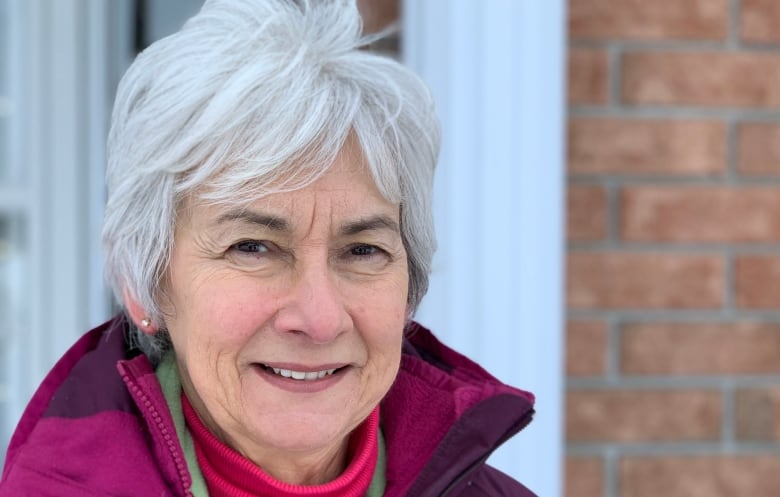City staff, planners and some politicians want a denser city, but what will it take to shift the culture?
Kate Porter · CBC News · Posted: May 01, 2020 4:00 AM ET | Last Updated: May 1

Watch
Here’s why Ottawa’s urban boundary is so important
They city’s planning department wants to add up to 1,650 hectares of land to the suburbs, expanding the urban boundary to do so. But community groups say that could increase greenhouse gas emissions and create urban sprawl.
Rachelle Lecours relaxes in her sunny, tidy bungalow in Orléans, reflecting on how much the Ottawa suburb has spread over four decades.
“I sort of feel guilty for being part of this growth,” Lecours said. As her family grew over the years, they moved from one new development to another, seeking new home features and upgrading their garage. It was a “bad habit,” she now says.
Homes on the fringes of the city are as popular as ever. People line up when a builder releases a new block of housing to lay money on a unit.
We can’t just give in to market demand for single-family homes.- Coun. Jeff Leiper
But city planners and politicians alike know that growth comes at a cost — pipes, transit, greenhouse gas emissions — and have talked for years about growing in a more compact way, and packing more homes into existing areas to limit those downsides.
Yet, in a big report to be debated at a virtual city committee meeting May 11, city staff say what’s realistic is to expand the urban boundary to allow an extra 23,300 homes at the fringes of the suburbs by 2046. That’s on top of the 66,300 units already in the pipeline.
Some 88 per cent of those yet-to-be-built units would be houses that fit one family, with their own front door. The rest would be apartment units.
- Ottawa looks to add up to 1,650 hectares to its suburbs
- Battle lines drawn over Ottawa’s suburban sprawl
- City proposal to expand urban boundary draws fire from both sides
Coun. Jeff Leiper was shocked city staff would recommend adding so much land — the 1,281 hectares designated for new urban areas is bigger than his entire ward of Kitchissippi.
He’s also disappointed by the calculations staff have done, saying it appears they’ve based the need for future land on the housing trends of the past. Leiper wants the urban-rural divide to stay where it is.
“If we’re going to be sustainable, if we are going to have 15-minute neighbourhoods, if we’re going to have affordable public transit, if we’re going to keep our taxes as low as possible, then we can’t just give in to market demand for single-family homes,” Leiper said. His ward in the core is the epicentre for new highrise towers and pricey infill developments.

Watson: ‘Easier said than done’
But Ottawa’s mayor agrees with city staff, who say holding the urban boundary is too ambitious.
“[That’s] easier said than done. You’ve seen some real battles over the years. Everyone talks a good line about intensification, but when it’s in their community they’re against it. There are dozens of examples,” Jim Watson said.
Watson calls the scenario staff prefer a “balanced approach.” Ottawa’s population is projected to rise by 400,000 to 1.4 million people by 2046, and the city sees splitting the projected 195,000 more households it would need almost evenly between existing built-up areas and undeveloped parcels.
The city can’t risk supplying insufficient space for the expected homes. The Ontario government requires Ottawa show it has enough.

That’s not to say the scenario staff propose doesn’t call for much more intensification than happens now. It does. By 2046, 42,700 more apartments, as well as 49,400 single-detached, semi-detached and row homes could elbow into existing Ottawa neighbourhoods
Staff have even worked with a local architectural firm on a new kind of structure that might help meet the needs of Ottawa families while building a city that’s more dense: the “613 flat.”

That is, six-rooms and three bedrooms per unit in short buildings that blend in with their neighbours. It offers the elusive “missing middle” style of housing — neither a house, nor a highrise apartment.
The problem, staff write, is it takes time to create policies, and more time yet to get the building industry and housing market to shift to building a new kind of lifestyle, and at the right price people can afford.
The missing middle
A planner who studies how cities grow and change says a big reason families especially keep flocking to the suburbs is that North American cities have not been very successful at delivering them exactly these kinds of options.
“Most of our cities have done either really high density in the centre, or quite low density in the form of single-detached dwellings,” said Markus Moos, an associate professor at the University of Waterloo’s school of planning. “So if you’re looking for green space immediately outside your home, single-detached dwellings are often the only affordable alternative.”
On the one hand, governments have to be sure they give neighbourhoods the good transit, amenities and green space they need, Moos said. Ideally, before a new development is built, so as not to lock in car-centric habits.
Beyond that, Moos said better ideas are needed to make sure people consider the full cost of where they choose to live.
He points to the idea of “location-efficient mortgages” — financing incentives for homebuyers who are less reliant on their cars.
Call for a culture shift
And then there’s mindset.
“I would like to call for a cultural shift. We don’t need to have a backyard in order to raise our kids. We don’t have to live in a house,” said Naama Blonder, an architect with Smart Density in Toronto
Blonder contributed to that city’s policy for how to make highrise towers more family-friendly. Many newcomers to Canada come from countries where dense living is the norm, she noted. Buildings here just need to have families in mind: units with enough bedroom space and room for a stroller, as well as common areas for teens to do homework.
And, Blonder added, when battles about new highrise proposals happen, focus less on how tall a building could be, and more on pushing for a great street-level vibe and pathways that connect people to transit and parks.
A different suburban dream
In the meantime, families continue to choose Ottawa’s far-flung suburbs because they’re affordable. They also like the newness, lack of maintenance and, sometimes, having space for multiple generations to live under one roof, said Deborah Burgoyne, president of the Ottawa Real Estate Board.
But subdivisions themselves are changing slowly, and many look nothing like the big lots on winding crescents of old. New suburbs are more compact. When the city issued a record number of building permits in 2018, more were for semis and stacked townhomes than for single-detached models. Some apartment buildings are going up.
“Toodle around and you won’t believe what’s out there now,” Burgoyne said.
As for Lecours, she still loves her community in Orléans, she just wishes there were more small coffee shops and community gardens, and more housing choices for renters and downsizing seniors.
“If they plan properly, I think it is OK to expand,” she said. “But it has to be done in a way where it serves the people.”

Reporter
Kate Porter covers municipal affairs for CBC Ottawa. Over the past 15 years, she has also produced in-depth reports for radio, web and TV, regularly presented the radio news, and covered the arts beat.











